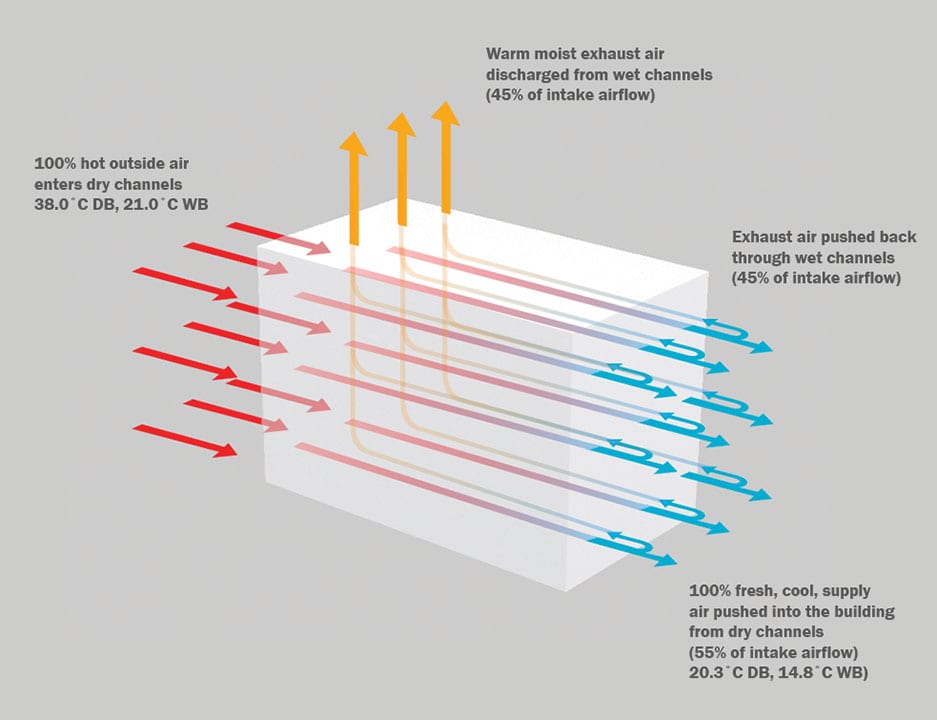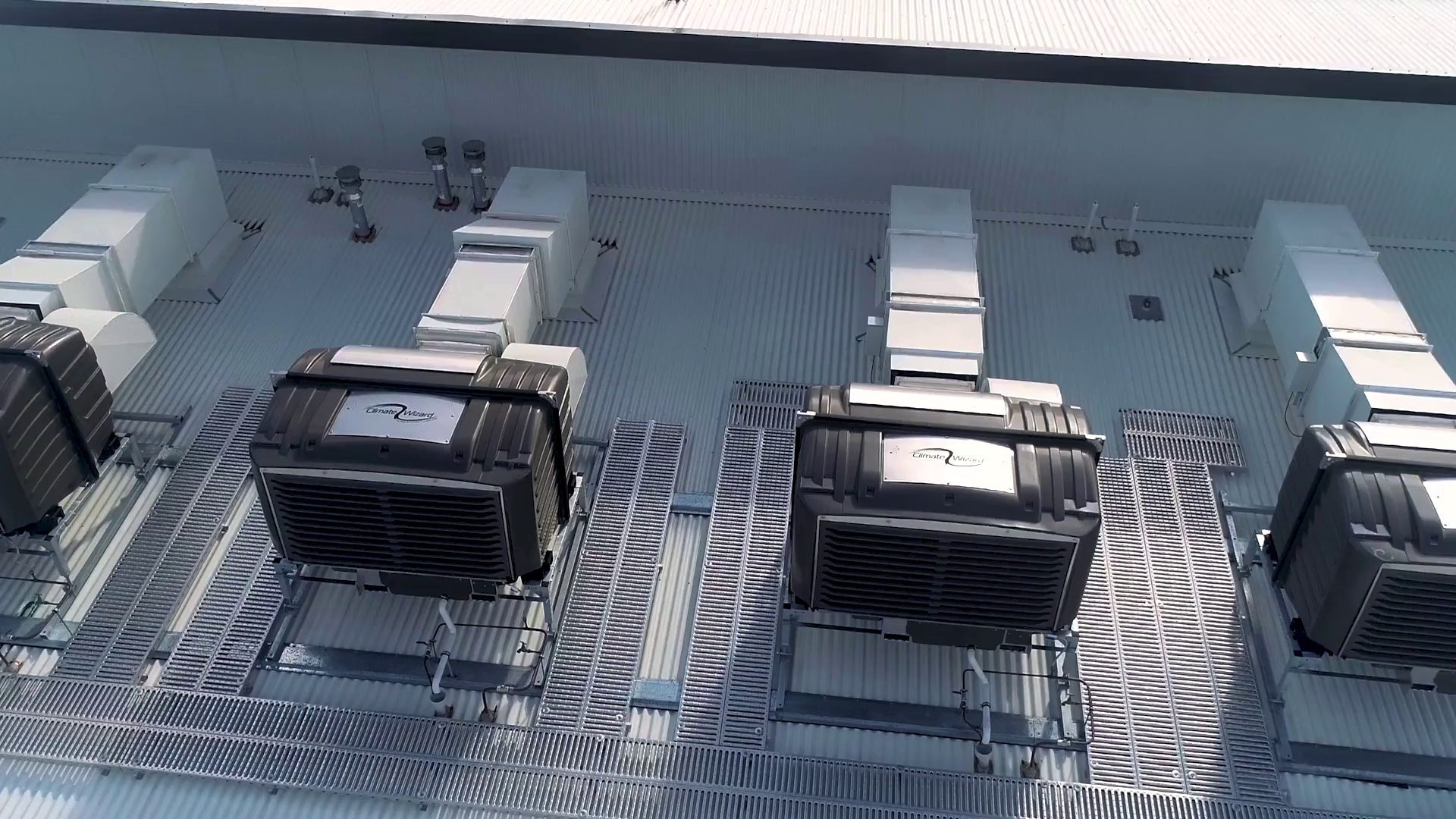INDIRECT EVAPORATIVE TECHNOLOGY
Indirect evaporative air conditioners use a hyper-efficient heat exchanger to produce 100% fresh, cool, outside air, with no added moisture. The fresh cold air produced by indirect evaporative coolers can be similar to that produced by refrigerated systems, with temperatures that approach the ambient dew-point temperature, using up to 80% less energy.
No matter how hot it gets outside, indirect evaporative coolers use the same amount of power and still delivers 100% fresh, cool air inside. This is in direct contrast to refrigerated systems, which require increasing amounts of power as outside temperatures rise. Indirect evaporative coolers’ cost-saving capabilities actually increase, when the heat is at its highest. At the same time, their performance also increases as temperatures rise – again, in complete contrast to refrigerated systems.
It is for ideal for use as a DOAS (dedicated outdoor air system), data centre cooling or for comfort cooling applications. Indirect evaporative coolers cover an exceptionally large range of flexible configurations in a wide range of industries.

BENEFITS
- Cooling performance increase when air temperature rises
- Vastly reduce running costs (retrofit or new install)
- No moisture added (dry air cooling)
- 100% fresh air
- Wide product range to meet applications requirement
- Flexible design & engineering configurations
- Can be retrofitted to existing air conditioning systems

WHAT IS INDIRECT EVAPORATIVE TECHNOLOGY?
HOW DOES IT WORK?
Indirect evaporative air conditioners use a hyper-efficient heat exchanger to produce 100% fresh, cool, outside air, with no added moisture. The core is an air-to-air heat exchanger consisting of alternating dry and wet channels.
- Hot outside air enters the cooler and the fan drives the fresh air through the dry channels.
- On exiting, some of the air flows into the building and the remainder is forced back through the wet channels.
- Air passing through the wet channels is cooled by water evaporation and cools the channel surface, before being exhausted as warm, moist air.
- The temperature of the fresh air passing through the adjacent dry channels is reduced and this cooled air is then transferred into the building without any added moisture.


